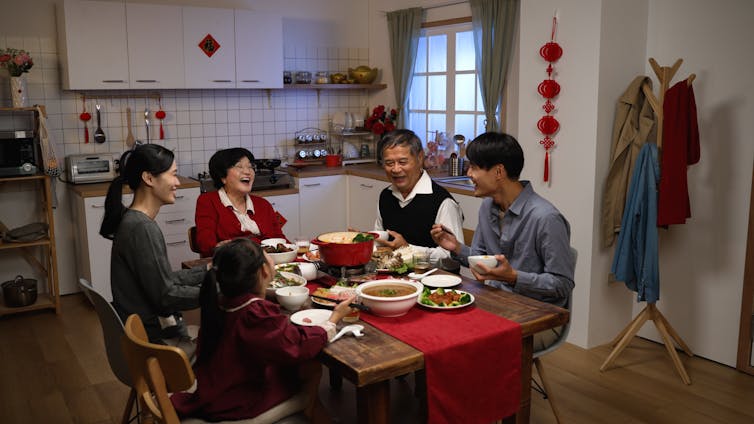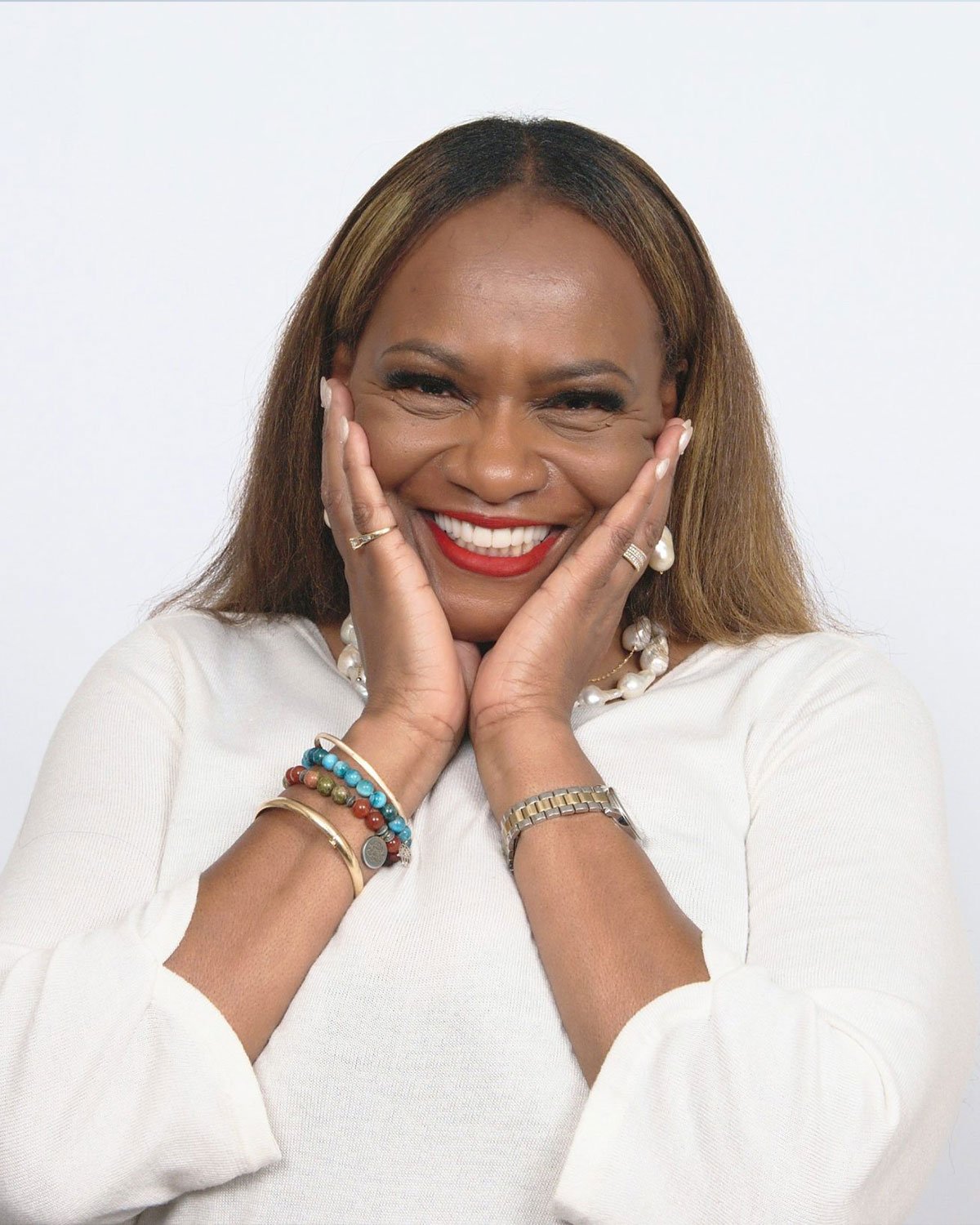Actor Lupita Nyong’o describes colourism as “the daughter of racism” in “a world that rewards lighter skin over darker skin”. This form of prejudice sees people more penalised the darker their skin is and the further their features are from those associated with whiteness.
In 2021, we developed the Everyday Colourism Scale to capture individual people’s perceptions of interpersonal colourism. This tool has allowed us to start to examine associations between experiences of colourism and demographic characteristics and various health and wellbeing outcomes. We found that experiencing colourism is associated with negative body image.
Our skin shade study has found that colourism affects both men and women, and can shape how people feel about themselves and how they choose romantic partners. It also shows how often this starts at home. We have found that families in the UK play a significant role in introducing children to colourist views and that these, in turn, can shape and undermine family relations.

Shutterstock
How colourism can play out in the home
For our study, we conducted interviews in 2019 with 33 people of colour (24 women and nine men) who were black, South Asian, East Asian or of mixed ethnic backgrounds (predominantly black and white).
We found that women and men’s experiences of familial colourism differed. The women we spoke to were targeted and affected more than men.
In a patriarchal society, women are subjected to global appearance ideals that posit light skin as beautiful and feminine. Our previous work on black men’s experiences of colourism found that light skin is seen as desirable in women – it is often a status symbol.
Our new findings show that familial awareness of the social capital inherent in light skin, particularly for women, affects how families treat their children.
Marie, a 50-year-old Chinese woman who participated in our research, described conflicting feelings about going out in the sun due to colourism from women in her family. She said:
I don’t like going outside because I’m going to get darker and end up looking like a peasant. My parents were peasants. When they were growing up, they used to work in the countryside. I remember as a kid, mum saying: ‘No, don’t go outside because you’ll get dark, and you’ll end up looking like you work in the paddy fields.’
Marie’s story suggests that family colourism may relate to feelings of shame. From her account, her mother seems to associate dark skin with low socioeconomic status and wants to distance her family from it.
Other participants described how dark skin was seen as ugly in ways that suggested that it might also be a source of shame. Portia, a 51-year-old black woman, said that her father told her, at 13, that she was “black and ugly” like her grandmother – his own mother. “It’s something that is etched on my brain,” she said. To her mind, it showed “how deep this self-hatred is”.
Participants also discussed the impact of family colourism on romantic relationships. Chloe, a 33-year-old woman with a black mother and white father, said skin shade influenced her choice of partner. “This is really sad,” she said. “My mum doesn’t like us to date black people … She only wants us to date white people.”
Chloe later said that her mother did not mind a former Chinese boyfriend, but was opposed to her dating south Asian people. Her mother was also uncomfortable with her having a partner from a mixed ethnic background.

Shutterstock
‘Oppositional consciousness’
Some of our participants described the impact of familial colourism on their sense of self-worth, body image and wellbeing. Divya, a 43-year-old Indian woman, suggested that her mother’s colourist views negatively affected her when she was growing up:
One of the biggest issues I had was with my mum always, always going on about how it’s better to be fairer, that you’ll only find a boy if you’re fairer and you’re only beautiful if you’re fair. And I think that really, really got to me.
These findings chime with what scholars have found in the US and Brazil. Families can actively make children aware of colourism and inflict it too. These same studies, though, have also highlighted how some families speak about colourism as a way of opposing and resisting it.
US sociologists JeffriAnne Wilder and Colleen Cain talk about “oppositional consciousness” to describe the process by which families can challenge colourist views and promote acceptance, celebrating all skin tones.
Our participants, too, described how their families helped them to appreciate people of all skin shades. Some had parents who encouraged them to take pride in their skin shades. Others described trying to raise awareness about colourism among their own children.
Portia told us that she talks with her son about colourism and they do not let it slide when they encounter it. Doing so, to her mind, is about healing, “because otherwise you end up carrying this stuff around, thinking it’s your fault. It is not.” It is also about ensuring her son grows up with confidence: “I don’t want him carrying this baggage around. I want him to go into the world as confident as he can be as a young black man.”
Colourism has a profound impact on people’s wellbeing. Experiencing this at the hands of the people closest to you is detrimental. This is particularly the case since racialised minority families are often seen to be havens from the racialised prejudice and discrimination experienced outside the home.
Figuring out how to challenge it, then, is paramount. By educating the next generation, families have a key role to play in disrupting the transmission of this prejudice.
For one participant, Malakai, it is about teaching love and positive parenting: “You, as a people, need to educate your children and tell them that they are beautiful. Teach the younger ones, educate them. And teach love among our people.”

Felecia Phillips Ollie DD (h.c.) is the inspiring leader and founder of The Equality Network LLC (TEN). With a background in coaching, travel, and a career in news, Felecia brings a unique perspective to promoting diversity and inclusion. Holding a Bachelor’s Degree in English/Communications, she is passionate about creating a more inclusive future. From graduating from Mississippi Valley State University to leading initiatives like the Washington State Department of Ecology’s Equal Employment Opportunity Program, Felecia is dedicated to making a positive impact. Join her journey on our blog as she shares insights and leads the charge for equity through The Equality Network.





Due to the fact that it generates concise and correct text in the output box, this summarising tool is an absolute necessity for both students and teachers. In addition to being simple to comprehend, this succinct phrase reduces a significant amount of the user’s workload. summarizing tool
Due to the fact that it generates concise and correct text in the output box, this summarising tool is an absolute necessity for both students and teachers. In addition to being simple to comprehend, this succinct phrase reduces a significant amount of the user’s workload. summarizing tool
Remarks to Conclude summarizing tool
It is almost vital for students to have a technique for summarising, particularly when they are required to prepare their assignments, research articles, and presentations. With regard to their presentations, the students are required to present the primary concept. Therefore, it is the most effective method for obtaining the idea behind the subject matter and presenting it in a professional manner. summarizing tool
The following is a list of the most important aspects that will help you compose an effective summary for your research paper: summarizing tool
The term “paraphrasing” is used to describe what exactly? summarizing tool
Improved Capabilities in the Art of Writing summarizing tool
There is no doubt that there are a great number of methods that can simply generate a summary for you; however, the critical point is that we need to select one that generates a summary with all of the accuracy and in a shorter amount of time. summarizing tool
If we want to utilise an online summarising tool and incorporate the SAAC technique into it as well, all we will need to do is place the name of the source, the author, and the action of the author before the main body (which would have been generated by the tool). This helps us understand that if we want to use the SAAC technique, we will need to utilise the SAAC technique. This is the only thing that will be required of us in the future. summarizing tool
Editorial staff summarizing tool
To provide an example, if you are reading content from the internet and you are willing to summarise it, you can simply begin with the title of the content, and then you can add the name of the author to the summary. summarizing tool
The Text Summarizer that we provide is constructed with complex algorithms that, first, make an effort to interpret the content that you input, and then, after that, generate a summary of the words that you have written. summarizing tool
In addition, this is essentially how a typical summary appears to be organised. summarizing tool
Below is a thorough guide that will assist you in beginning the process of creating a summary of your research report. summarizing tool
The majority of the time, editors are really busy because they are required to first comprehend the underlying tale and then assess lengthy works. It should come as no surprise that this is a laborious and time-consuming activity that demands a great deal of effort. The document can be copied and pasted into the input box, and then the concise output can be obtained. This allows them to avoid the difficulty altogether. summarizing tool
Your blog is a gratitude feast for the soul, and I’m thankful for the delicious servings of positivity you provide!